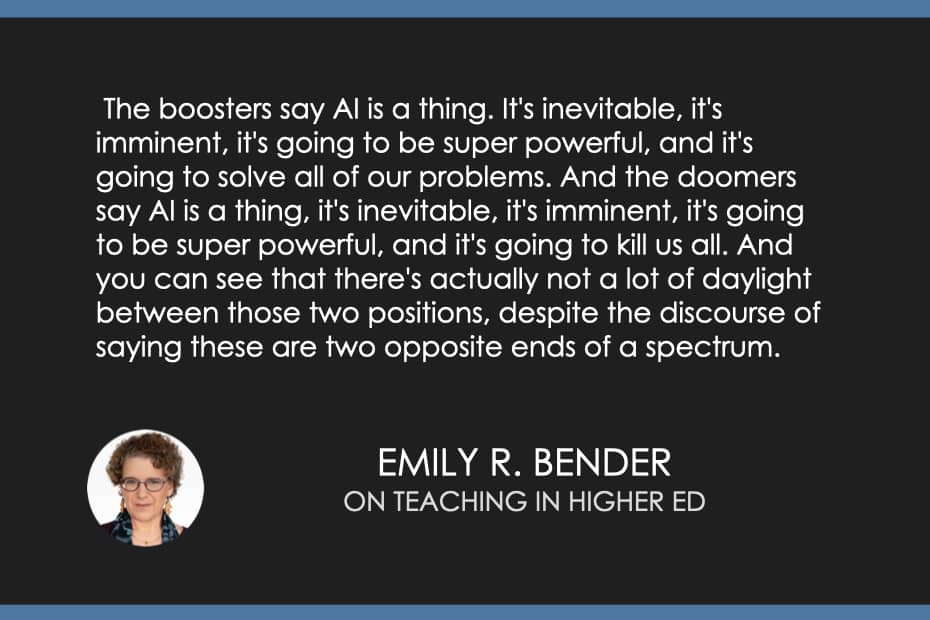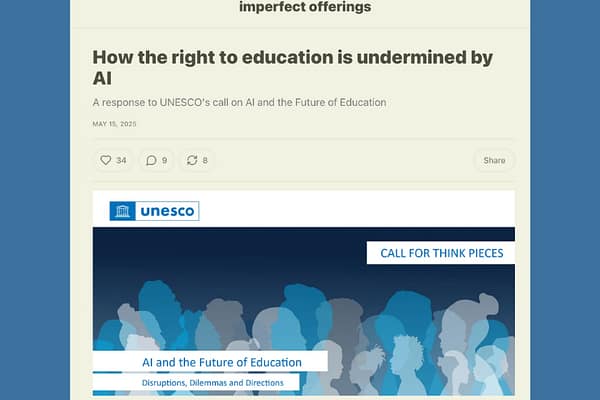Podcast (tihe_podcast):
Play in new window | Download | Transcript
Subscribe: Apple Podcasts | Spotify | RSS | How do I listen to a podcast?
Emily M. Bender & Alex Hanna share about their book, The AI Con: How to Fight Big Tech’s Hype and Create the Future We Want on episode 576 of the Teaching in Higher Ed podcast.
Quotes from the episode

What's going on with the phrase artificial intelligence is not that it means something else than what we're using it to mean, it's that it doesn't have a proper referent in the world.
-Emily M. Bender
There's a much broader range of people who can have opinions on AI.
-Alex Hanna
The boosters say AI is a thing. It's inevitable, it's imminent, it's going to be super powerful, and it's going to solve all of our problems. And the doomers say AI is a thing, it's inevitable, it's imminent, it's going to be super powerful, and it's going to kill us all. And you can see that there's actually not a lot of daylight between those two positions, despite the discourse of saying these are two opposite ends of a spectrum.
-Emily M. Bender
Teachers' working conditions are students' learning conditions.
-Alex Hannay



